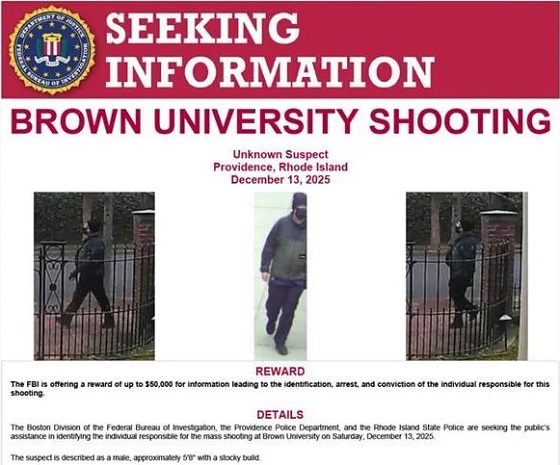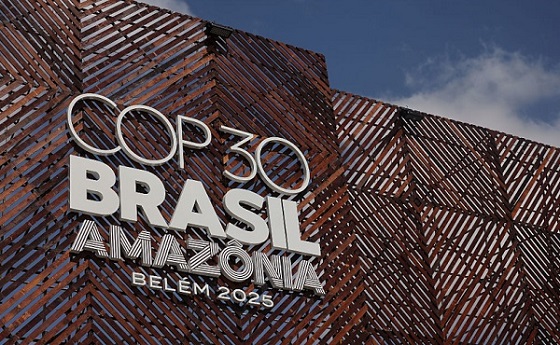Uncategorized
Race to find survivors, aid victims after Indonesia tsunami

TANJUNG LESUNG, Indonesia — Doctors worked to save injured victims while hundreds of military personnel and volunteers scoured debris-strewn beaches in search of survivors Monday after a deadly tsunami gushed ashore without warning on Indonesian islands, killing more than 280 people on a busy holiday weekend.
The waves that swept terrified locals and tourists into the sea Saturday night along the Sunda Strait followed an eruption and apparent landslide on Anak Krakatau, or “Child of Krakatoa,” one of the world’s most infamous volcanic islands.
At least 281 people were killed and more than 1,000 were injured. Dozens remained missing from the disaster areas along the coastlines of western Java and southern Sumatra islands, and the numbers could increase once authorities hear from all stricken areas.
The Indonesian Medical Association of the worst-affected Banten region said that it sent doctors, medical supplies and equipment, and that many of the injured were in need of orthopedic and neurosurgery surgery. It said most patients are domestic tourists who were visiting beaches during the long weekend ahead of Christmas.
It was the second deadly tsunami to hit seismically active Indonesia this year. A powerful earthquake triggered a tsunami that hit Sulawesi island in September, giving residents a brief warning before the waves struck.
On Saturday night, however, the ground did not shake to alert people before the waves ripped buildings from their foundations and swept terrified concertgoers celebrating on a resort beach into the sea.
Dramatic video posted on social media showed the Indonesian pop band Seventeen performing under a tent on Tanjung Lesung beach at a concert for employees of a state-owned electricity company. Dozens of people sat at tables while others swayed to the music near the stage as strobe lights flashed and theatrical smoke was released. A child could also be seen wandering through the crowd.
Seconds later, with the drummer pounding just as the next song was about to begin, the stage suddenly heaved forward and buckled under the force of the water, tossing the band and its equipment into the audience.
The group released a statement saying their bass player, guitarist and road manager were killed, while two other band members and the wife of one of the performers were missing. On Monday, five more bodies were recovered around the hotel, including a little boy.
“The tide rose to the surface and dragged all the people on site,” the band’s statement said. “Unfortunately, when the current receded, our members were unable to save themselves while some did not find a place to hold on.”
Disaster agency spokesman Sutopo Purwo Nugroho said Monday morning that 281 deaths had been confirmed and at least 1,016 people were injured.
The worst-affected area was the Pandeglang region of Java’s Banten province, which encompasses Ujung Kulon National Park and popular beaches, the agency said.
Indonesian President Joko “Jokowi” Widodo arrived at the disaster area by helicopter on Monday. A day earlier, he expressed his sympathy and ordered government agencies to respond quickly to the disaster.
“My deep condolences to the victims in Banten and Lumpung provinces,” he said Sunday. “Hopefully, those who are left have patience.”
In the city of Bandar Lampung on Sumatra island, hundreds of residents took refuge at the governor’s office, while at the popular resort area of Anyer beach on Java, some survivors wandered in the debris.
Many of the affected areas are popular weekend getaways for residents of Jakarta, Indonesia’s capital, but foreigners were also visiting the area over the long holiday weekend. A Norwegian photographer and volcano enthusiast posted on Facebook that he had to run to escape the waves while on the beach photographing the volcano.
The tsunami was not huge and did not surge far inland, but its force was still powerful and destructive. Hotels and hundreds of homes were heavily damaged by the waves. Broken chunks of concrete and splintered sticks of wood littered hard-hit coastal areas, turning popular beach areas into near ghost towns. Debris from thatch-bamboo shacks was strewn along the coast.
Yellow, orange and black body bags were laid out, and weeping relatives identified the dead.
Scientists, including those from Indonesia’s Meteorology and Geophysics agency, said the tsunami could have been caused by landslides — either above ground or under water — on the steep slope of the erupting volcano. The scientists also cited tidal waves caused by the full moon.
The 305-meter (1,000-foot) -high Anak Krakatau lies on an island in the Sunda Strait between Java and Sumatra islands, linking the Indian Ocean and the Java Sea. It has been erupting since June and did so again about 24 minutes before the tsunami, the geophysics agency said.
The volcanic island formed over years after the 1883 eruption of the Krakatoa volcano, one of the largest, most devastating in recorded history. That disaster killed more than 30,000 people, launched far-reaching tsunamis and created so much ash that day was turned to night in the area and a global temperature drop was recorded.
Most of the island sank into a volcanic crater under the sea, and the area remained calm until the 1920s, when Anak Krakatau began to rise from the site. It continues to grow each year and erupts periodically.
Gegar Prasetya, co-founder of the Tsunami Research Center Indonesia, said Saturday’s tsunami was likely caused by a flank collapse — when a big section of a volcano’s slope gives way. It’s possible for an eruption to trigger a landslide above ground or beneath the ocean, both capable of producing waves, he said.
“Actually, the tsunami was not really big, only 1
Indonesia, a vast archipelago of more than 17,000 islands and home to 260 million people, lies along the “Ring of Fire,” an arc of volcanoes and fault lines in the Pacific Basin. Roads and infrastructure are poor in many areas, making access difficult in the best of conditions.
A powerful quake on the island of Lombok killed 505 people in August. The tsunami and earthquake that hit Sulawesi in September killed more than 2,100, while thousands more are believed to still be buried in
Saturday’s tsunami also rekindled memories of the massive magnitude 9.1 earthquake that hit Indonesia on Dec. 26, 2004. It spawned a giant tsunami off Sumatra island, killing more than 230,000 people in a dozen countries — the majority in Indonesia.
___
Associated Press writers Margie Mason and Ali Kotarumalos in Jakarta, Indonesia, contributed to this report.
Niniek Karmini, The Associated Press
Uncategorized
Mortgaging Canada’s energy future — the hidden costs of the Carney-Smith pipeline deal


Much of the commentary on the Carney-Smith pipeline Memorandum of Understanding (MOU) has focused on the question of whether or not the proposed pipeline will ever get built.
That’s an important topic, and one that deserves to be examined — whether, as John Robson, of the indispensable Climate Discussion Nexus, predicted, “opposition from the government of British Columbia and aboriginal groups, and the skittishness of the oil industry about investing in a major project in Canada, will kill [the pipeline] dead.”
But I’m going to ask a different question: Would it even be worth building this pipeline on the terms Ottawa is forcing on Alberta? If you squint, the MOU might look like a victory on paper. Ottawa suspends the oil and gas emissions cap, proposes an exemption from the West Coast tanker ban, and lays the groundwork for the construction of one (though only one) million barrels per day pipeline to tidewater.
But in return, Alberta must agree to jack its industrial carbon tax up from $95 to $130 per tonne at a minimum, while committing to tens of billions in carbon capture, utilization, and storage (CCUS) spending, including the $16.5 billion Pathways Alliance megaproject.
Here’s the part none of the project’s boosters seem to want to mention: those concessions will make the production of Canadian hydrocarbon energy significantly more expensive.
As economist Jack Mintz has explained, the industrial carbon tax hike alone adds more than $5 USD per barrel of Canadian crude to marginal production costs — the costs that matter when companies decide whether to invest in new production. Layer on the CCUS requirements and you get another $1.20–$3 per barrel for mining projects and $3.60–$4.80 for steam-assisted operations.
While roughly 62% of the capital cost of carbon capture is to be covered by taxpayers — another problem with the agreement, I might add — the remainder is covered by the industry, and thus, eventually, consumers.
Total damage: somewhere between $6.40 and $10 US per barrel. Perhaps more.
“Ultimately,” the Fraser Institute explains, “this will widen the competitiveness gap between Alberta and many other jurisdictions, such as the United States,” that don’t hamstring their energy producers in this way. Producers in Texas and Oklahoma, not to mention Saudi Arabia, Venezuela, or Russia, aren’t paying a dime in equivalent carbon taxes or mandatory CCUS bills. They’re not so masochistic.
American refiners won’t pay a “low-carbon premium” for Canadian crude. They’ll just buy cheaper oil or ramp up their own production.
In short, a shiny new pipe is worthless if the extra cost makes barrels of our oil so expensive that no one will want them.
And that doesn’t even touch on the problem for the domestic market, where the higher production cost will be passed onto Canadian consumers in the form of higher gas and diesel prices, home heating costs, and an elevated cost of everyday goods, like groceries.
Either way, Canadians lose.
So, concludes Mintz, “The big problem for a new oil pipeline isn’t getting BC or First Nation acceptance. Rather, it’s smothering the industry’s competitiveness by layering on carbon pricing and decarbonization costs that most competing countries don’t charge.” Meanwhile, lurking underneath this whole discussion is the MOU’s ultimate Achilles’ heel: net-zero.
The MOU proudly declares that “Canada and Alberta remain committed to achieving Net-Zero greenhouse gas emissions by 2050.” As Vaclav Smil documented in a recent study of Net-Zero, global fossil-fuel use has risen 55% since the 1997 Kyoto agreement, despite trillions spent on subsidies and regulations. Fossil fuels still supply 82% of the world’s energy.
With these numbers in mind, the idea that Canada can unilaterally decarbonize its largest export industry in 25 years is delusional.
This deal doesn’t secure Canada’s energy future. It mortgages it. We are trading market access for self-inflicted costs that will shrink production, scare off capital, and cut into the profitability of any potential pipeline. Affordable energy, good jobs, and national prosperity shouldn’t require surrendering to net-zero fantasy.If Ottawa were serious about making Canada an energy superpower, it would scrap the anti-resource laws outright, kill the carbon taxes, and let our world-class oil and gas compete on merit. Instead, we’ve been handed a backroom MOU which, for the cost of one pipeline — if that! — guarantees higher costs today and smothers the industry that is the backbone of the Canadian economy.
This MOU isn’t salvation. It’s a prescription for Canadian decline.
Uncategorized
Cost of bureaucracy balloons 80 per cent in 10 years: Public Accounts

The cost of the bureaucracy increased by $6 billion last year, according to newly released numbers in Public Accounts disclosures. The Canadian Taxpayers Federation is calling on Prime Minister Mark Carney to immediately shrink the bureaucracy.
“The Public Accounts show the cost of the federal bureaucracy is out of control,” said Franco Terrazzano, CTF Federal Director. “Tinkering around the edges won’t cut it, Carney needs to take urgent action to shrink the bloated federal bureaucracy.”
The federal bureaucracy cost taxpayers $71.4 billion in 2024-25, according to the Public Accounts. The cost of the federal bureaucracy increased by $6 billion, or more than nine per cent, over the last year.
The federal bureaucracy cost taxpayers $39.6 billion in 2015-16, according to the Public Accounts. That means the cost of the federal bureaucracy increased 80 per cent over the last 10 years. The government added 99,000 extra bureaucrats between 2015-16 and 2024-25.
Half of Canadians say federal services have gotten worse since 2016, despite the massive increase in the federal bureaucracy, according to a Leger poll.
Not only has the size of the bureaucracy increased, the cost of consultants, contractors and outsourcing has increased as well. The government spent $23.1 billion on “professional and special services” last year, according to the Public Accounts. That’s an 11 per cent increase over the previous year. The government’s spending on professional and special services more than doubled since 2015-16.
“Taxpayers should not be paying way more for in-house government bureaucrats and way more for outside help,” Terrazzano said. “Mere promises to find minor savings in the federal bureaucracy won’t fix Canada’s finances.
“Taxpayers need Carney to take urgent action and significantly cut the number of bureaucrats now.”
Table: Cost of bureaucracy and professional and special services, Public Accounts
| Year | Bureaucracy | Professional and special services |
|
$71,369,677,000 |
$23,145,218,000 |
|
|
$65,326,643,000 |
$20,771,477,000 |
|
|
$56,467,851,000 |
$18,591,373,000 |
|
|
$60,676,243,000 |
$17,511,078,000 |
|
|
$52,984,272,000 |
$14,720,455,000 |
|
|
$46,349,166,000 |
$13,334,341,000 |
|
|
$46,131,628,000 |
$12,940,395,000 |
|
|
$45,262,821,000 |
$12,950,619,000 |
|
|
$38,909,594,000 |
$11,910,257,000 |
|
|
$39,616,656,000 |
$11,082,974,000 |
-

 Uncategorized2 days ago
Uncategorized2 days agoMortgaging Canada’s energy future — the hidden costs of the Carney-Smith pipeline deal
-

 Business2 days ago
Business2 days agoThere’s No Bias at CBC News, You Say? Well, OK…
-

 International2 days ago
International2 days agoAustralian PM booed at Bondi vigil as crowd screams “shame!”
-

 Opinion2 days ago
Opinion2 days agoReligion on trial: what could happen if Canada passes its new hate speech legislation
-

 Automotive1 day ago
Automotive1 day agoCanada’s EV gamble is starting to backfire
-

 Agriculture22 hours ago
Agriculture22 hours agoEnd Supply Management—For the Sake of Canadian Consumers
-

 Alberta21 hours ago
Alberta21 hours agoAlberta Next Panel calls to reform how Canada works
-

 Artificial Intelligence10 hours ago
Artificial Intelligence10 hours agoUK Police Pilot AI System to Track “Suspicious” Driver Journeys










